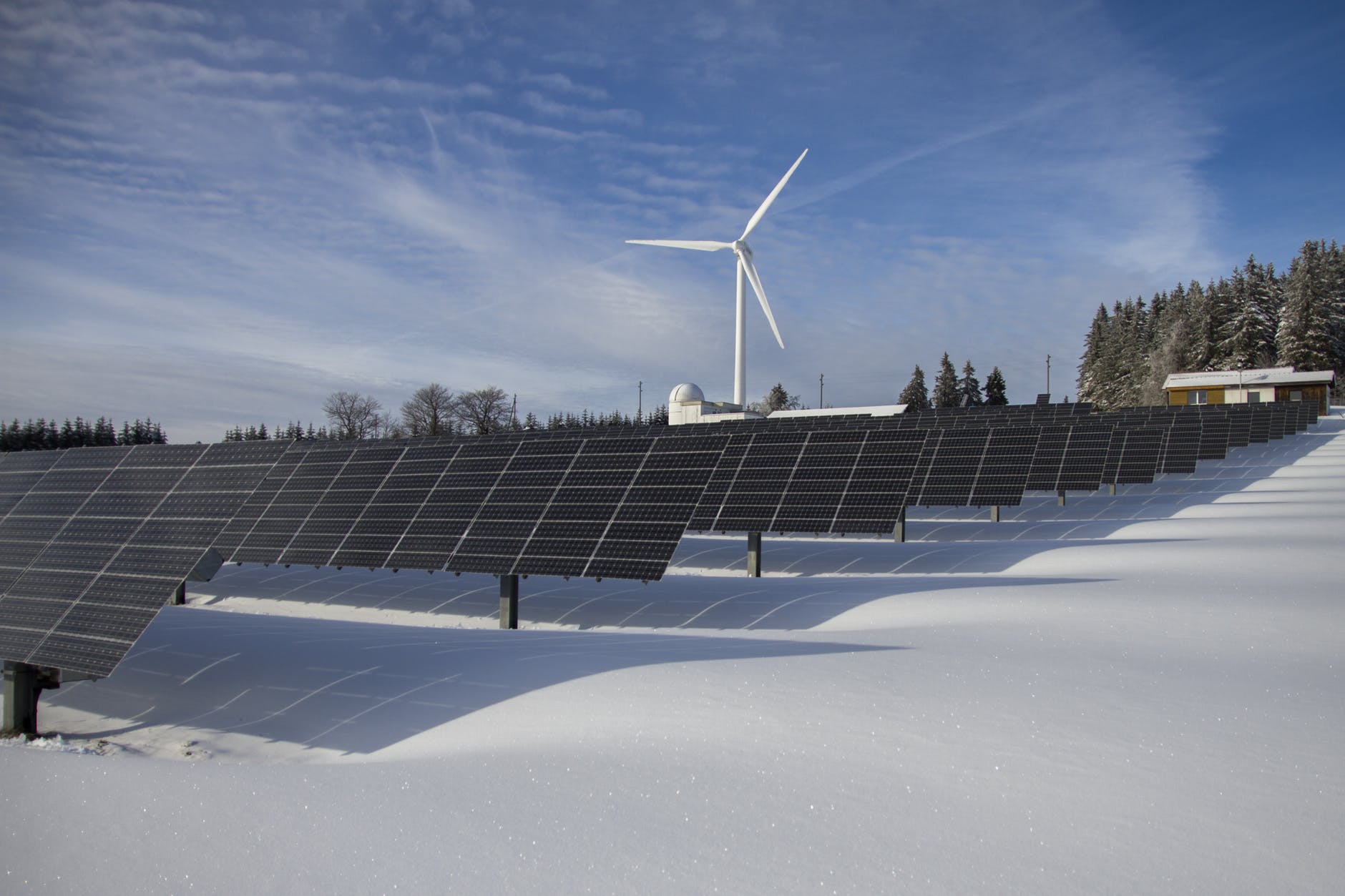Win-Win: When Environmental Regulation Leads to Technological Innovation
What is the best way to solve our most pressing environmental problems, such as carbon emissions causing global climate disruptions? Under the right conditions, technological innovation induced by government regulation can play a significant role. In many cases, innovation leads to lowered costs to industry and consumers in addition to the direct environmental benefits that are the primary goal of environmental regulations — think lower energy bills from installation of the latest generation of solar panels, or lower gas costs from more fuel-efficient cars.
The Information Technology and Innovation Foundation (ITIF) recently issued a report identifying the conditions under which the economics literature suggests environmental regulation can be expected to stimulate such beneficial technological innovation (“When Does Environmental Regulation Stimulate Technological Innovation?”1). One key takeaway of the report is that firm and consistent messaging to industry that regulation will commence and continue is an important driver inducing industry to innovate. The flip side is that where regulators and policymakers equivocate about whether and the extent to which they will regulate, industry will tend to continue the status quo, preventing society from reaping the benefits of new ways of producing goods and services, in addition to suffering the losses from continued environmental harms.
Applied to the question of when and how far to push for change to our carbon-based economy, the answer is: push now, push hard, keep pushing, and let industry know that is what we are going to do. This conclusion is particularly salient in light of the Trump administration’s decision to roll back federal Corporate Average Fuel Economy (CAFE) standards and in light of efforts by New York and other states to increase renewable energy standards in our electricity grids.

The ITIF report lists twelve conditions that raise the likelihood that industry will respond to environmental regulation by innovating:2
- Compliance with regulation is expected to be expensive.
- Higher authorities are unlikely to force regulators to relax.
- The threat of regulatory enforcement is legitimate and credible.
- Industry expects regulation to become increasingly stringent over time.
- The technological landscape for regulatory compliance is target-rich.
- Regulated firms have slack resources.
- The regulated industry is competitive.
- Prospects for shifting production to “pollution havens” are limited.
- Regulators rely on performance standards.
- The regulatory process induces an open exchange of information.
- Regulators have a sophisticated understanding of the regulated industry.
- Technology policy complements regulation.
Note that most of these conditions are under the direct or indirect control of regulators, legislators and other policymakers. Exceptions are conditions 5 through 8, which arise from company or market conditions not under the direct or reasonably-proximate influence of government policy, at least in the short term.
Illustrations of the operation of these conditions abound in recent decades. The ITIF report cites the Clean Air Act of 1970, which required utilities to install scrubbers to remove pollutants from power plant smokestacks. Despite industry predictions that CAA regulations would force them into bankruptcy, technological innovation led to scrubbers that were relatively inexpensive. An exception was California’s 1990 Zero Emission Vehicle regulation, which was later scaled back when automakers were unable to produce affordable cars that could comply with the regulation.3
Naturally, industry tends to argue that the exception is the rule — they simply cannot comply with proposed regulations because the new rules (purportedly) will be technologically or economically infeasible. The ITIF report provides useful benchmarks for policymakers and the public to evaluate such claims. Applying the ITIF conditions to two classes of regulations designed to reduce carbon emissions — (1) federal Corporate Average Fuel Economy (CAFE) standards, and (2) state renewable energy standards — indicates that technological innovation can be expected to contribute to the achievement of these policy goals.
The American (and international) automobile market is comprised of numerous multinational corporations that compete keenly and have deep R&D budgets and access to capital. Manufacturers have demonstrated over the years that they are capable of producing cars and trucks with vastly improved fuel efficiency through the use of new materials, designs and engineering. These technological improvements, once achieved, are open and generally transferable among carmakers, and there is no reason to believe that such improvements are likely to stop any time soon.4 In short, all of the ITIF conditions indicate that technological innovation will allow automakers to continue to meet increasing CAFE standards at reasonable cost, thus undercutting the rationale for the Trump administration’s decision to freeze CAFE standards at 2020 levels.
The electric utility market is similarly well-situated to meet increasing requirements for renewable energy to replace carbon-based fuels, if regulators press for that change. In New York, for example, the Clean Energy Standard announced in 2016 requires 50 percent of the state’s electricity to come from renewable energy sources like wind and solar by 2030.5 Environmental advocates argue that even more ambitious goals are both necessary and achievable.6

The renewable energy industry has consistently produced significant efficiency increases in energy outputs and reliability and decreased inputs of materials, labor and capital. For example, from 2009 to 2016, the costs of generating electricity from wind and solar, including capital, operation and maintenance costs, and financing, decreased 66 percent and 85 percent, respectively.7 This trend is not surprising, given that the power industry, like the automobile industry, has many competitors and suppliers with access to capital, large R&D sectors and wide adoption of technological improvements. Potential technological or infrastructure bottlenecks typically are short-term in nature and usually can be addressed by regulation over the longer term. For example, although New York has ample resources for hydropower and solar and wind farms upstate, most energy use is downstate in and around New York City, Westchester County and Long Island, and there are currently insufficient transmission lines to connect the two regions. The Public Service Commission, however, has identified this gap and initiated proceedings to address the need to add more transmission lines.8
Energy markets are also in the midst of a halting evolution from centralized, cost-plus utility models to more competitive models that reward demand reduction and efficiency through distributed energy resources and more responsive price signals (i.e., linking rates to desired outcomes such as demand reduction, low emissions and providing power at times of peak demand, rather than recouping a fixed percentage on top of utility costs.) Regulatory delays in this transition tend to impede technological innovation.
For New York and other states’ regulators to achieve their decarbonization goals, they will need to move forward aggressively with increased renewable energy standards, address infrastructure bottlenecks and accelerate the transition to newer energy supply reimbursement models.
Technology is not static. Innovation enables industries to provide more and better products and services at lower cost. Policymakers should keep this in mind as the default when regulating polluting industries and evaluating industry claims that pollution control and environmental compliance is too hard or too expensive.
1. David M. Hart, When Does Environmental Regulation Stimulate Technological Innovation?, https://itif.org/publications/2018/07/23/when-does-environmental-regulation-stimulate-technological-innovation.
2. ITIF Report at 2.
3. ITIF Report at 1-2.
4. A 2017 study at Carnegie Mellon University concludes that the costs of CAFE regulations to consumers and automakers are lower and fuel savings are much higher that other analyses imply because manufacturers can achieve fuel efficiency savings through tradeoffs with other attributes such as acceleration. Kate S. Whitefoot et al, Compliance by Design: Influence of Acceleration Tradeoffs on CO2 Emissions and Costs of Fuel Economy and Greenhouse Gas Regulations, Environmental Science & Technology (2017). https://phys.org/news/2017-09-fuel-economy-standards-cheaper-beneficial.html.
6. See, e.g., Comments in N.Y.S. Public Service Commission Case 15-E-0302. Large Scale Renewables by the Green Education and Legal Fund, Item No. 37, http://documents.dps.ny.gov/public/MatterManagement/CaseMaster.aspx?MatterCaseNo=15-e-0302 (calling for “a goal of 100% clean energy by 2030 (excluding nuclear, natural gas, garbage incineration), or at least net zero greenhouse gas emissions”).
7. National Resources Defense Council, “Clean Energy and Efficiency Can Replace Coal for a Reliable, Modern Electricity Grid,” March 2017, https://assets.nrdc.org/sites/default/files/clean-energy-replace-coal-modern-electricity-grid-ip.pdf?_ga=2.52211113.167292642.1533379523-2106659851.1533379523, at 3 (citing Lazard, “Levelized Cost of Energy Analysis 10.0”, December 2016, https://www.lazard.com/media/438038/levelized-cost-of-energy-v100.pdf, at 10).
8. N.Y.S. Public Service Commission Case 14-02003, Order Finding Transmission Needs Driven by Public Policy Requirements, Item No. 20, Dec. 17, 2015, http://documents.dps.ny.gov/public/MatterManagement/CaseMaster.aspx?MatterCaseNo=14-E-0454&submit=Search.
- Electric School Bus Funding: New York Giveth and (Tries to) Taketh - December 31, 2020
- Composting is Easy. Here is Video Proof. - October 24, 2018
- Win-Win: When Environmental Regulation Leads to Technological Innovation - August 8, 2018